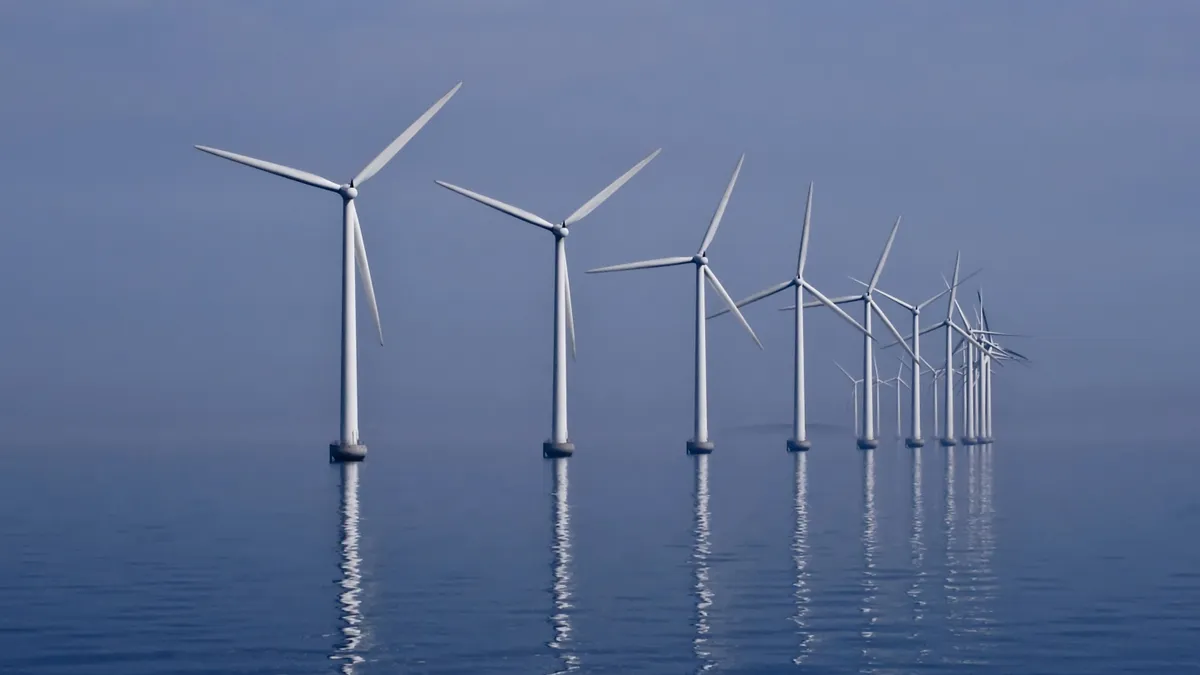Dive Brief:
- The Department of Energy (DOE) proposed to provide funding for the first U.S. freshwater offshore wind facility, a 20.7 MW project in Lake Erie off the coast of Cleveland, Ohio, according to documents released on Tuesday.
- The DOE published a final Environmental Assessment for the Icebreaker Wind project, being developed by Norwegian-owned Fred. Olsen Renewables and the nonprofit Lake Erie Energy Development Corporation (LEEDCo), in cooperation with the U.S. Army Corps of Engineers and the U.S. Coast Guard. DOE concluded that a broader environmental review, in the form of an environmental impact statement, would not be needed for its funding proposal.
- Federal approval comes as stakeholders raise concerns about the environmental impacts of the project in a proceeding of the Public Utilities Commission of Ohio (PUCO). The six-turbine project is also opposed by Murray Energy, the large coal company known for its influence in the Trump Administration to establish coal-friendly energy and environmental policies.
Dive Insight:
The U.S. offshore wind industry is on the precipice of a development boom, though most of the planning and permitting is focused on projects along the East Coast.
Similar to saltwater offshore wind projects, opponents of the Icebreaker project have raised concerns about risks to wildlife, particularly birds. The DOE's assessment noted "minor" short term and long term impacts on migratory birds due to the small size of the project, which is intended to be a demonstration for the technology.
Opponents have also raised concerns over oil leakage risks from turbines, particularly as it relates to the freshwater location. But DOE concluded that "the effects on the quality of the human environment are not likely to be highly controversial."
"We are eager now to earn state approval and move forward," Lorry Wagner, LEEDCo president, said in a statement.
Icebreaker has already completed the PJM interconnection queue process, securing a grid connection, according to the developers. The project includes a nearly 12-mile submerged transmission cable that will be considered as part of the proceeding with the 3.45 MW 500-foot high turbines, laid out in the image below. A short segment between the proposed new substation and the existing substation would be considered separately, according to a PUCO spokesperson.

The project is supported by several environmental groups that want to increase renewable energy in Ohio, such as Sierra Club and the Ohio Environmental Council.
CORRECTION: A previous version of this article misstated when the DOE issued its funding proposal. The DOE released the documents on Oct. 2. The article also added a statement from the PUCO to clarify which aspect of the project would be considered in a separate proceeding.















